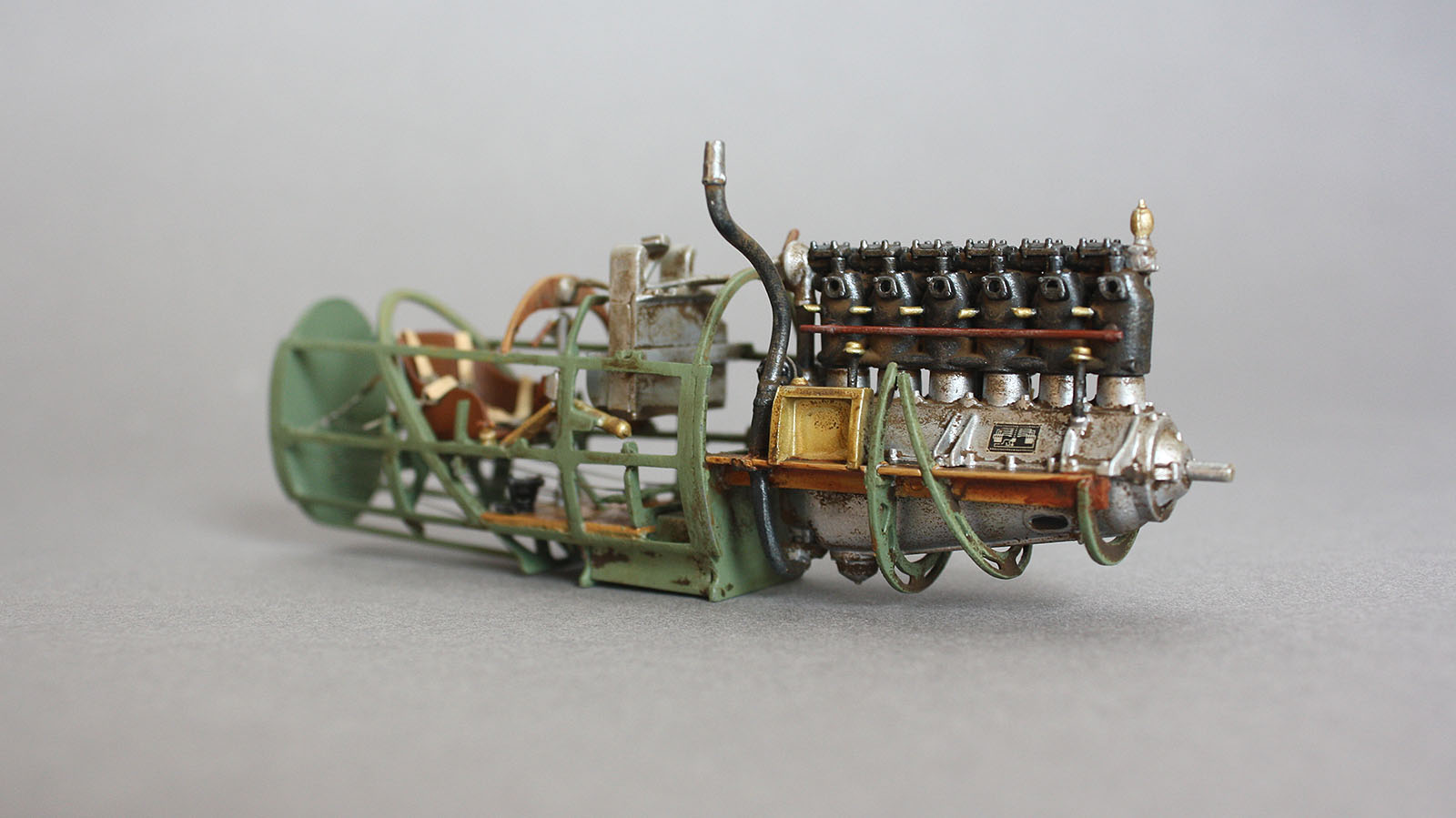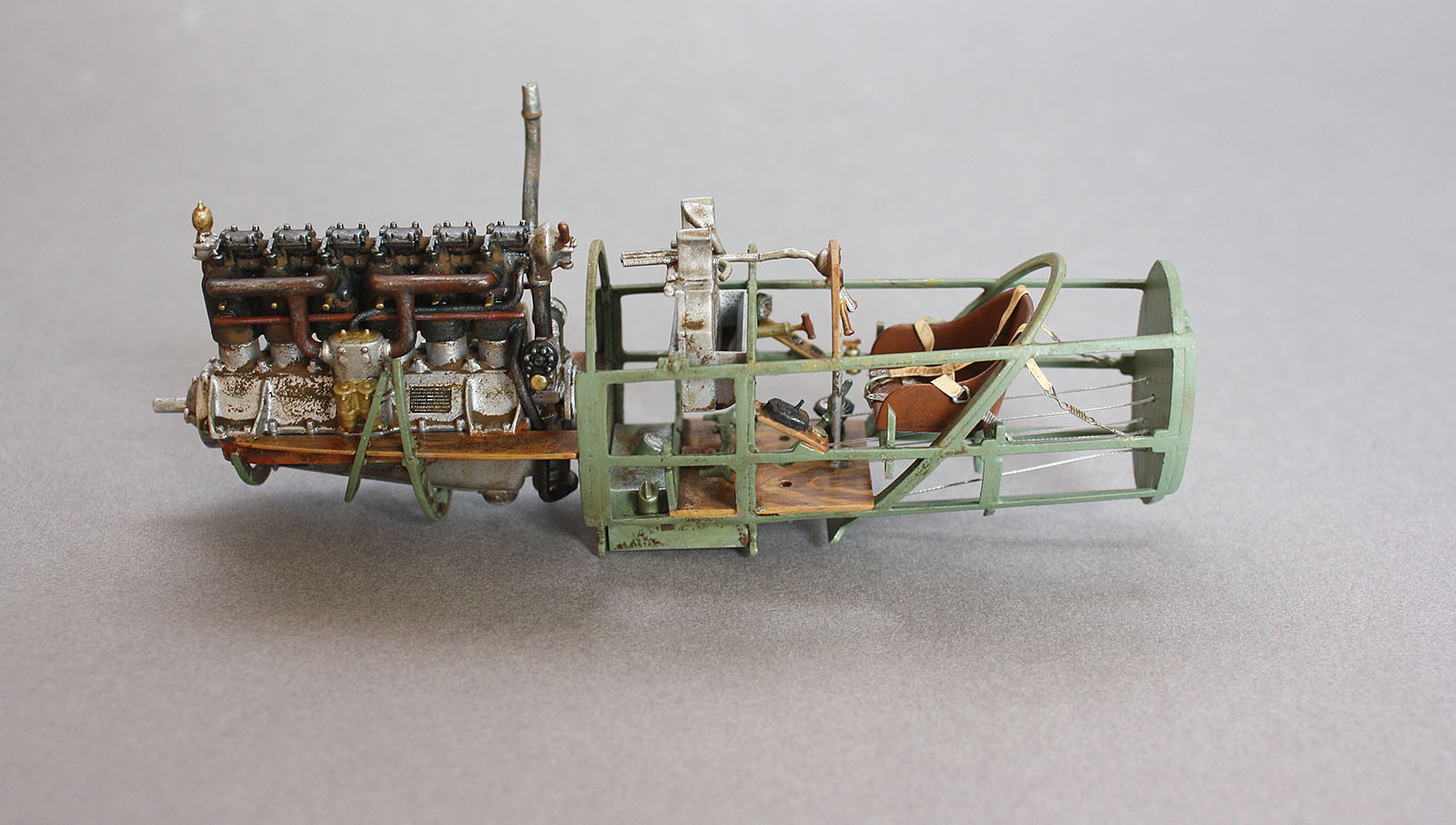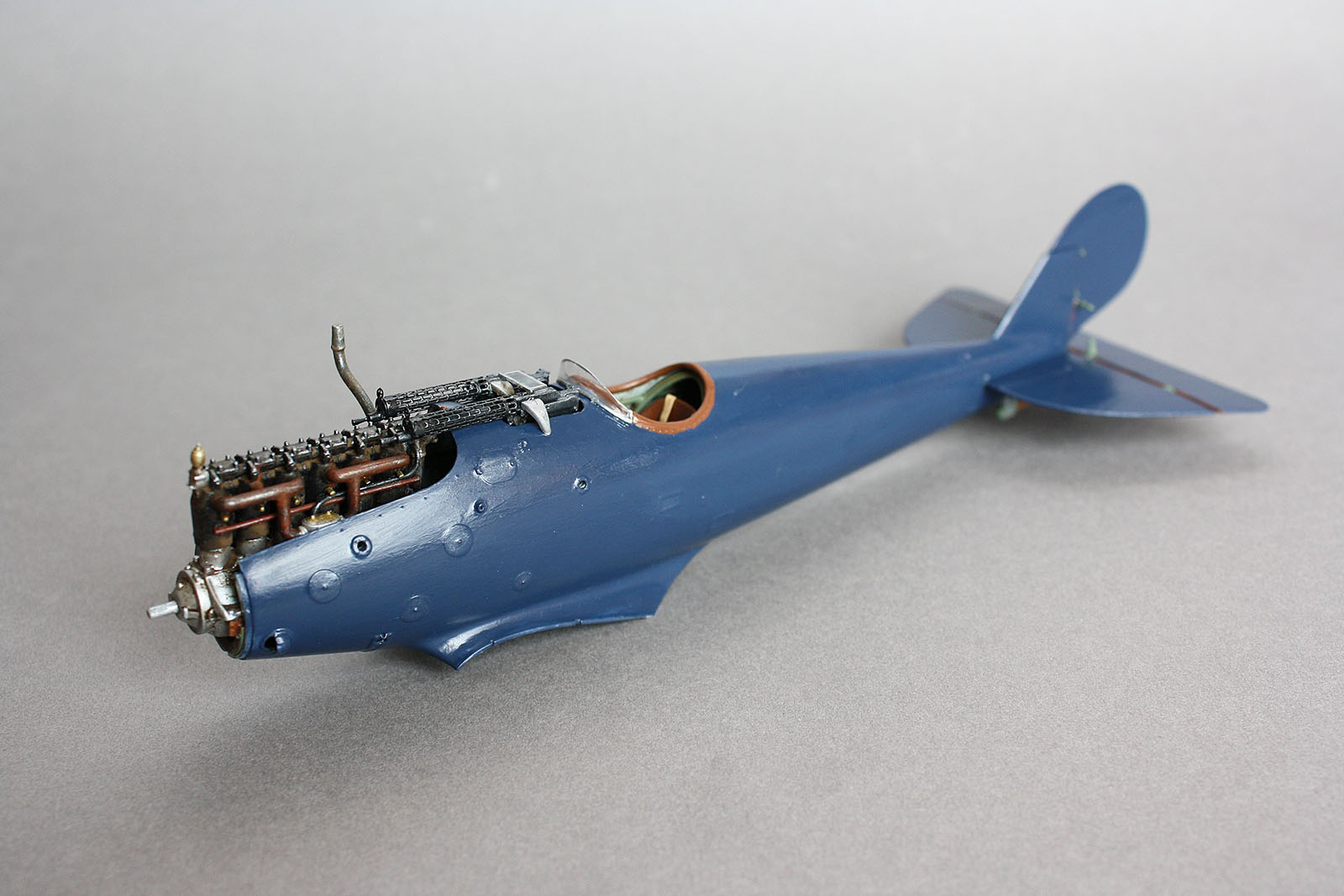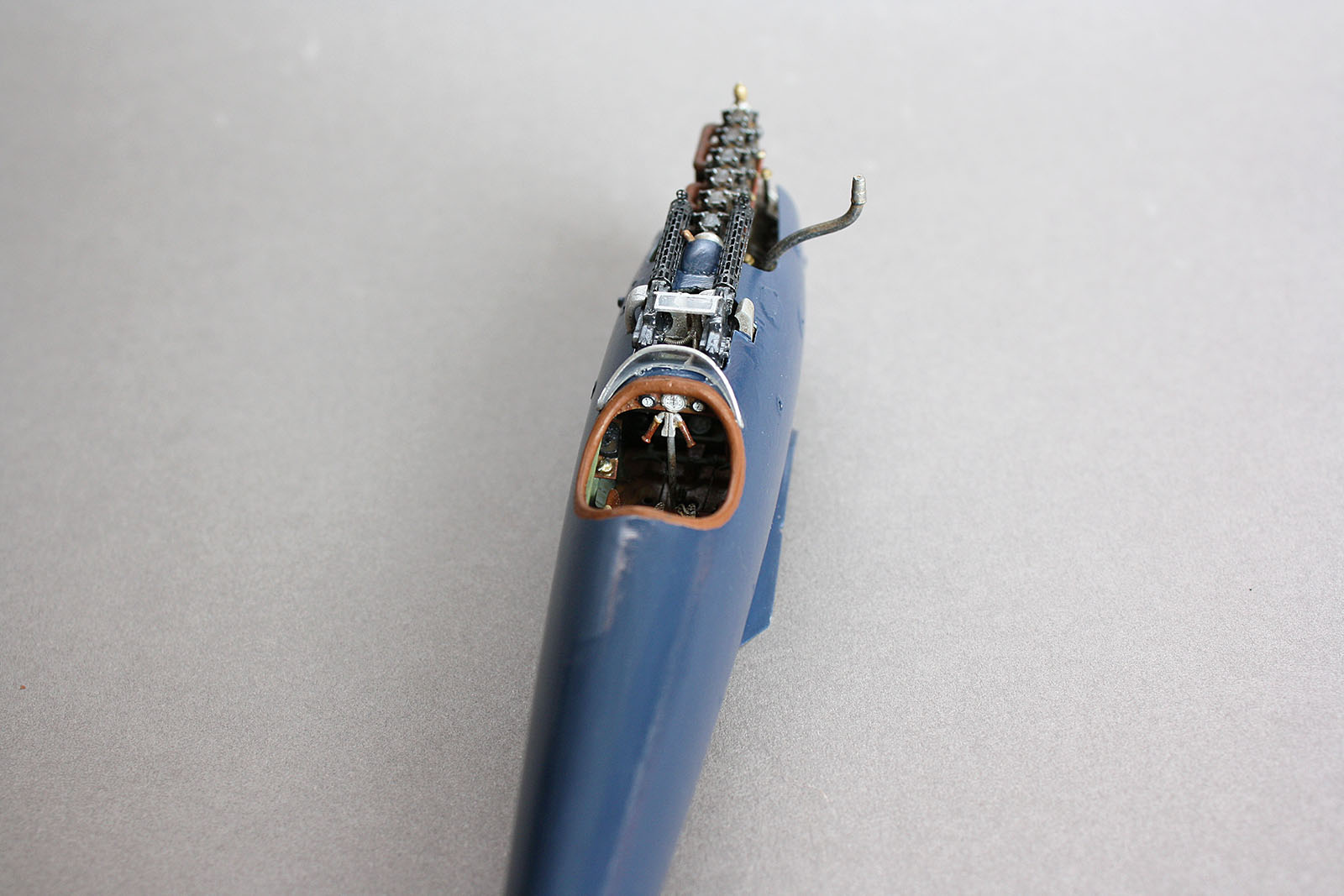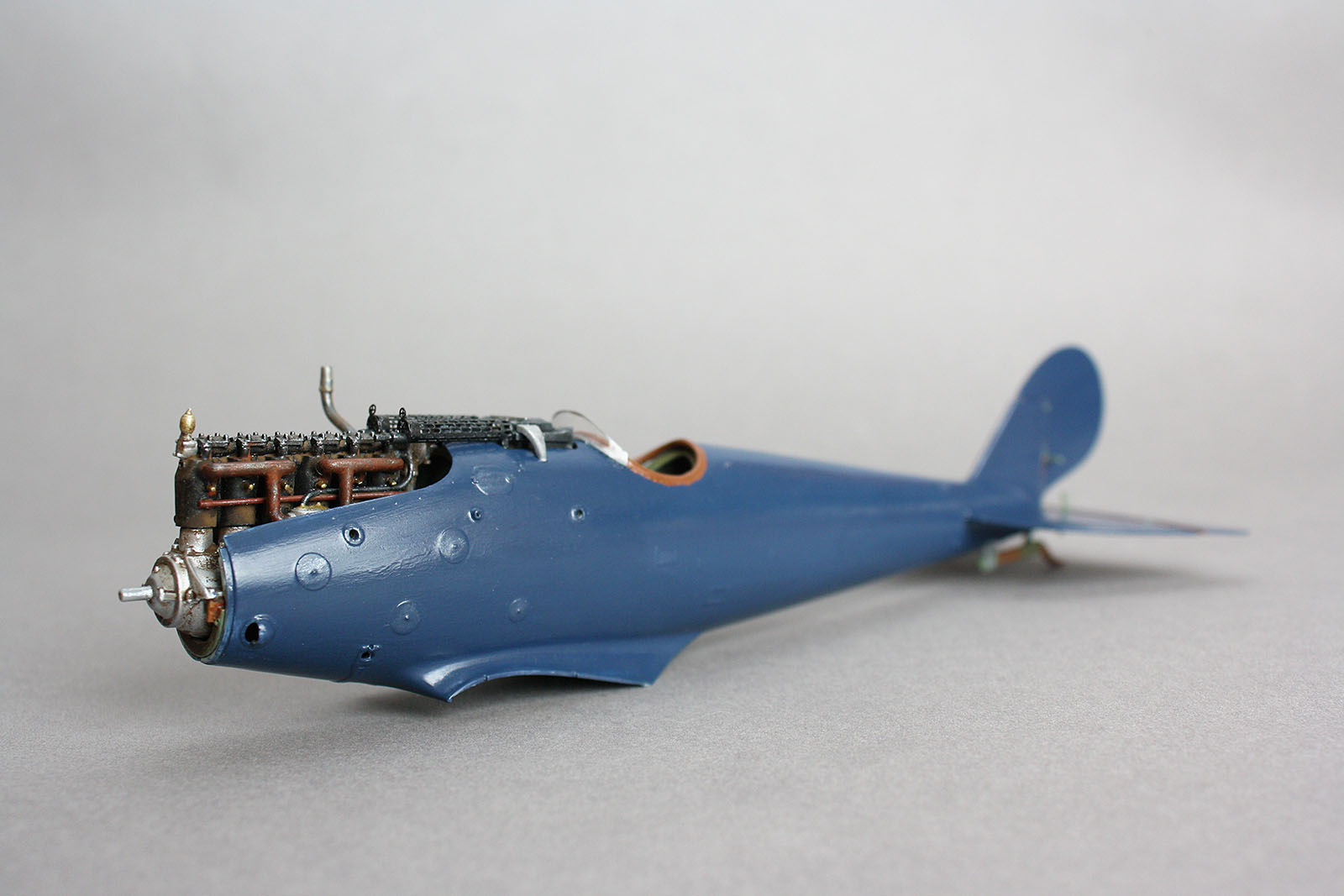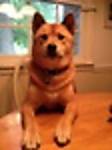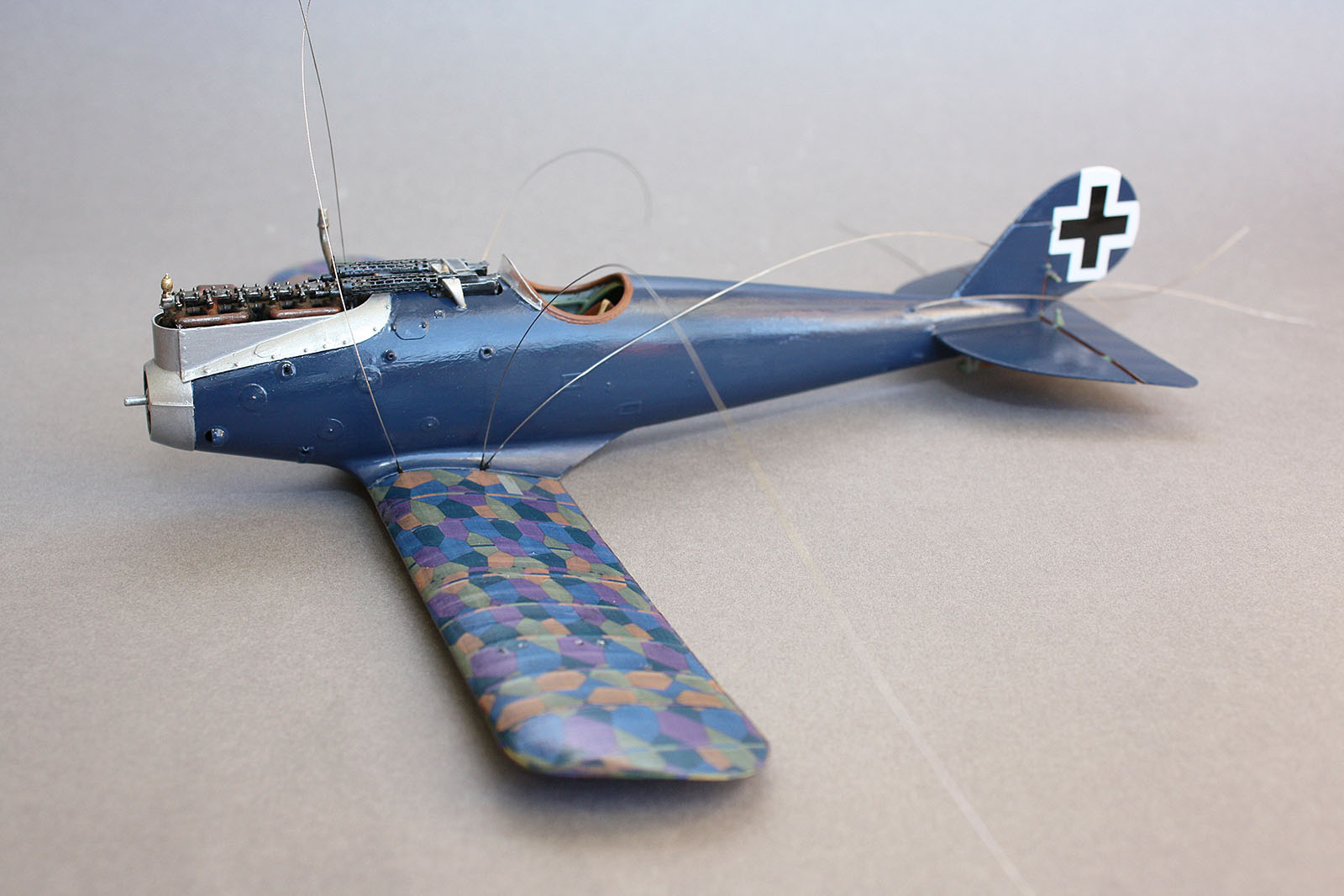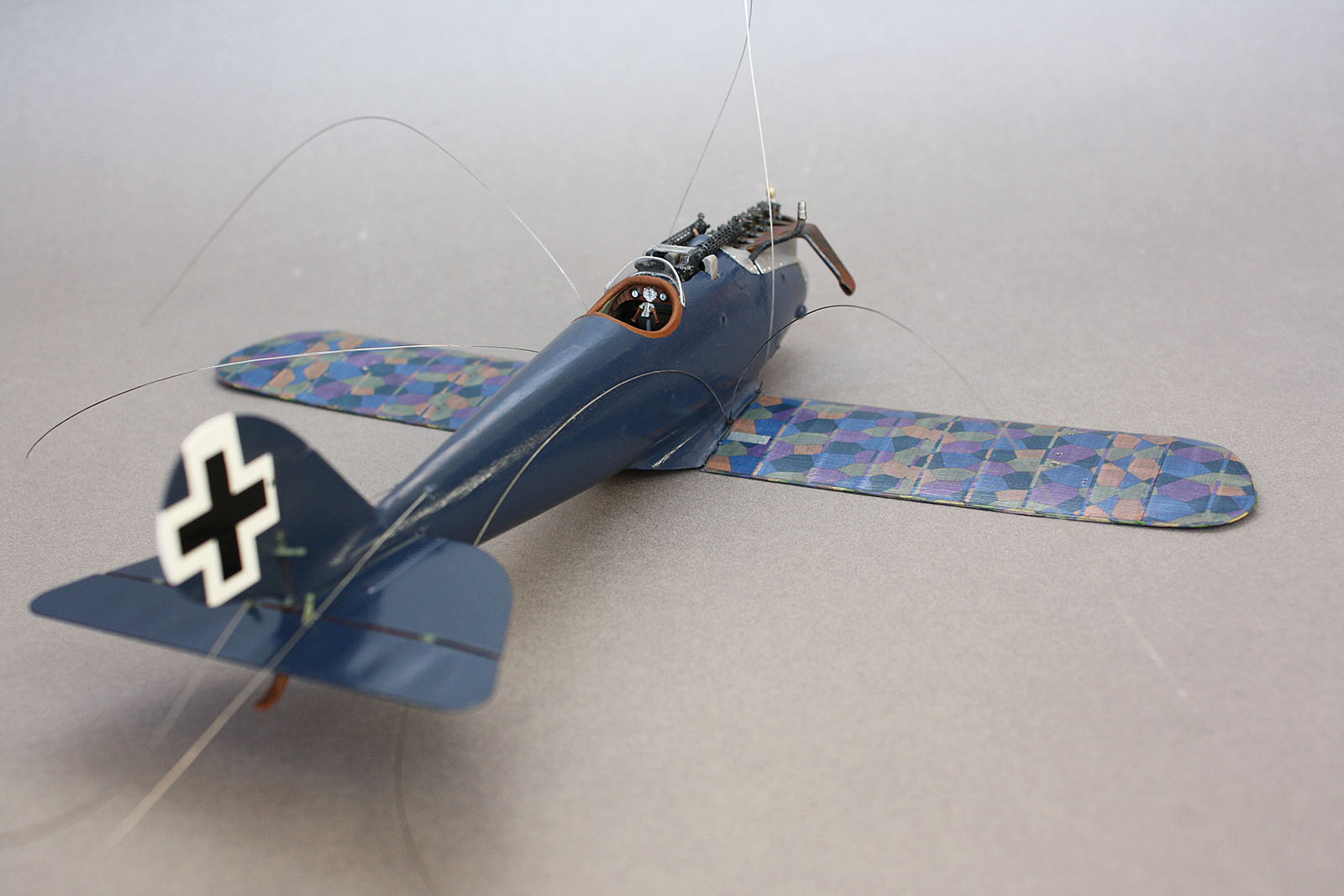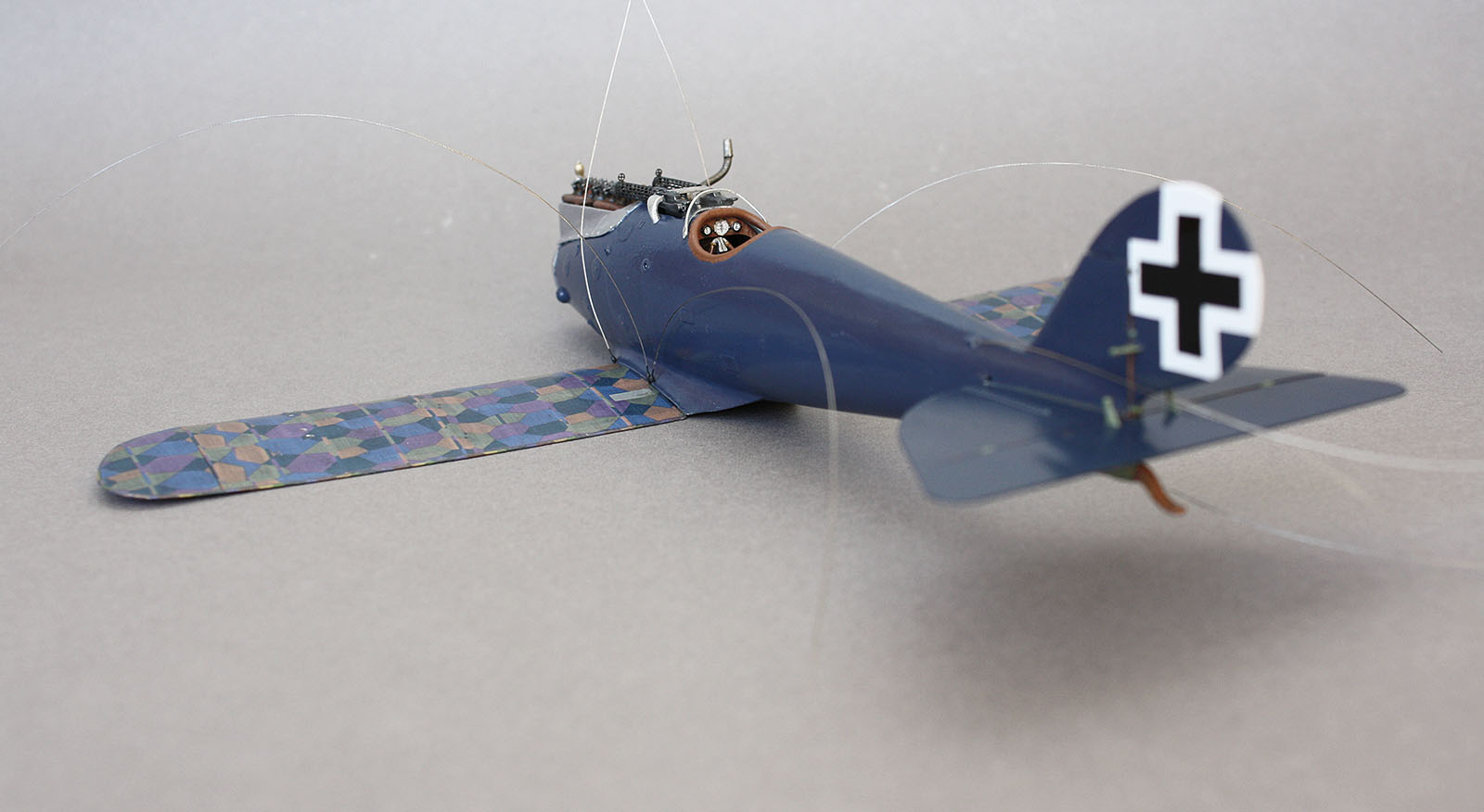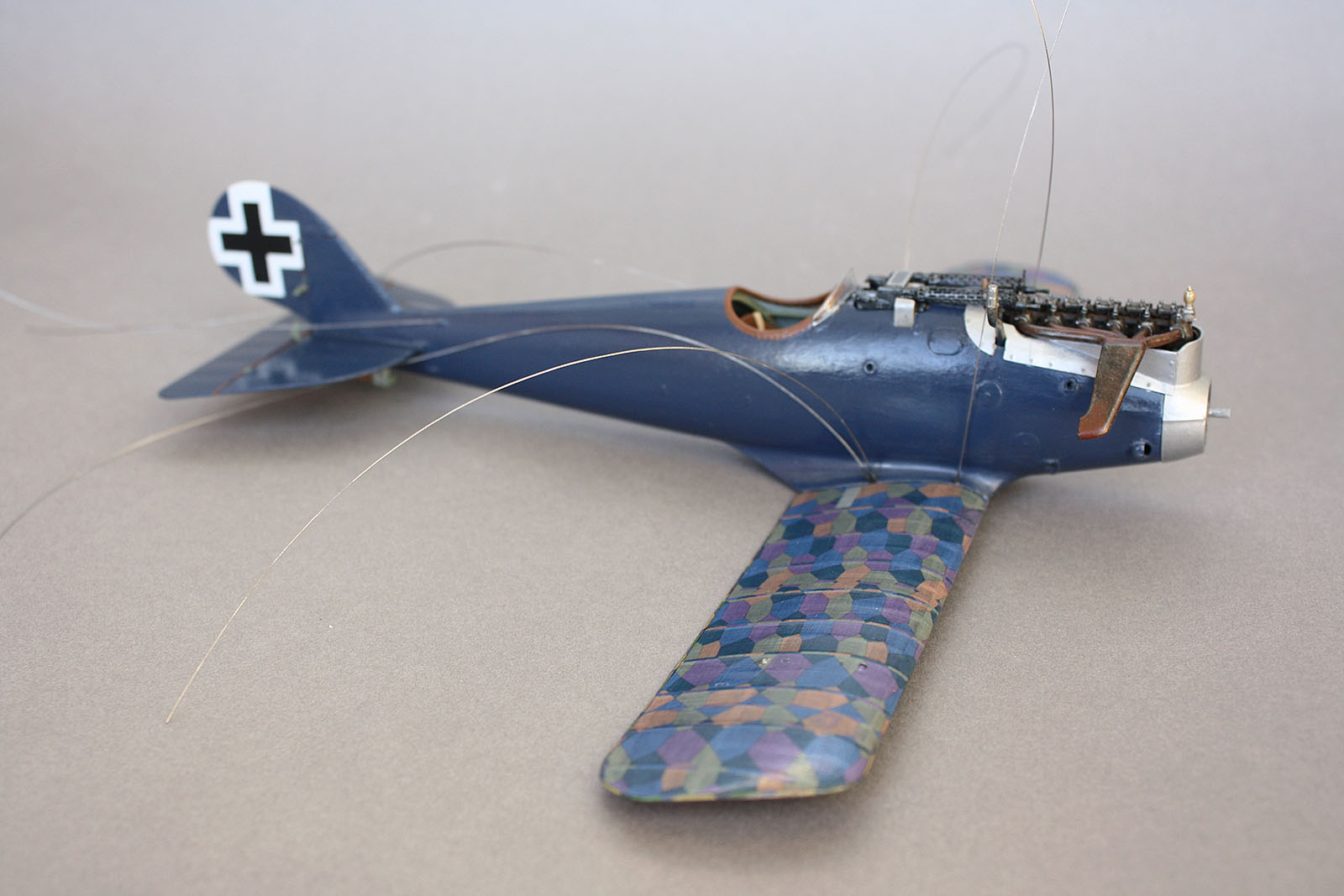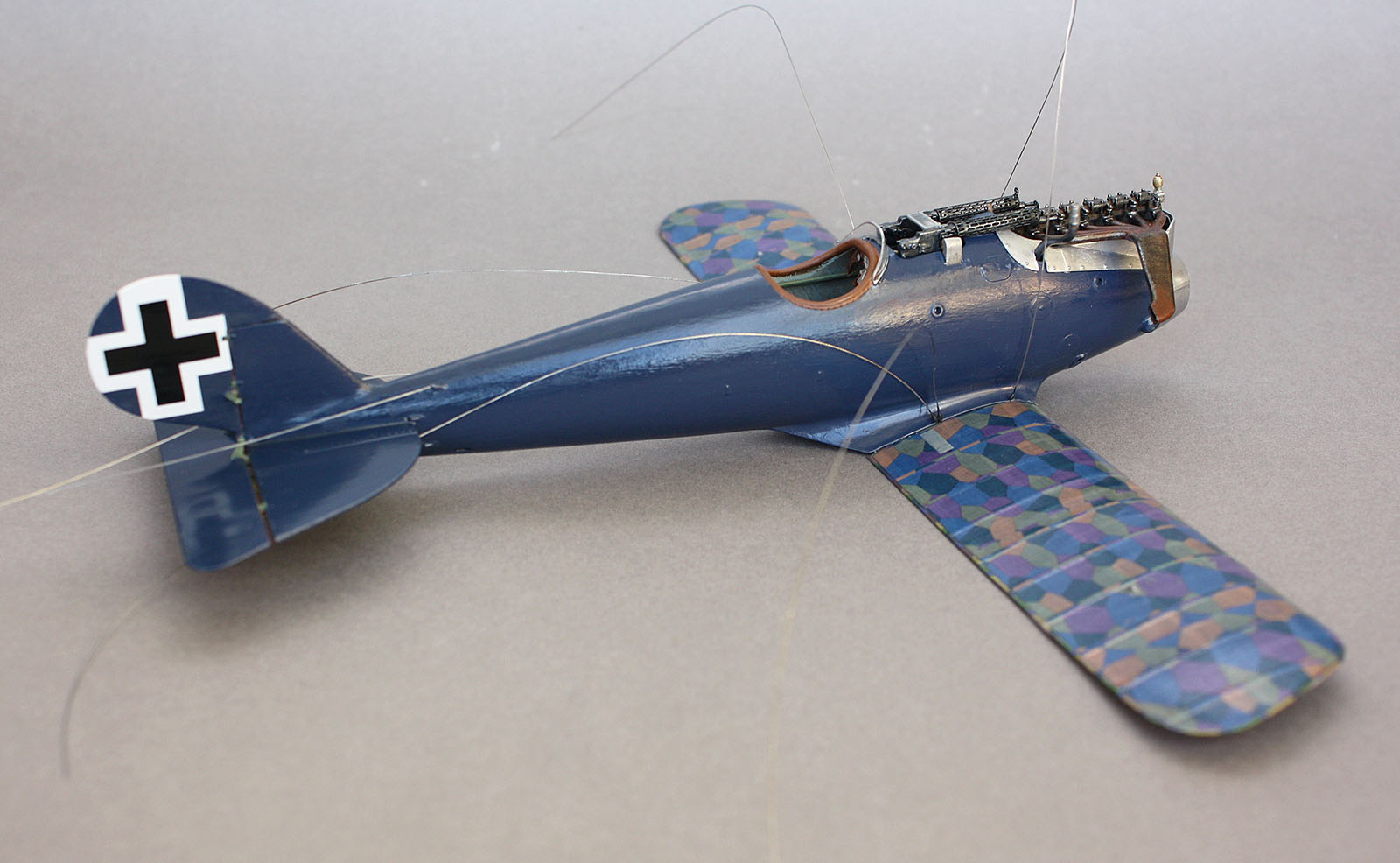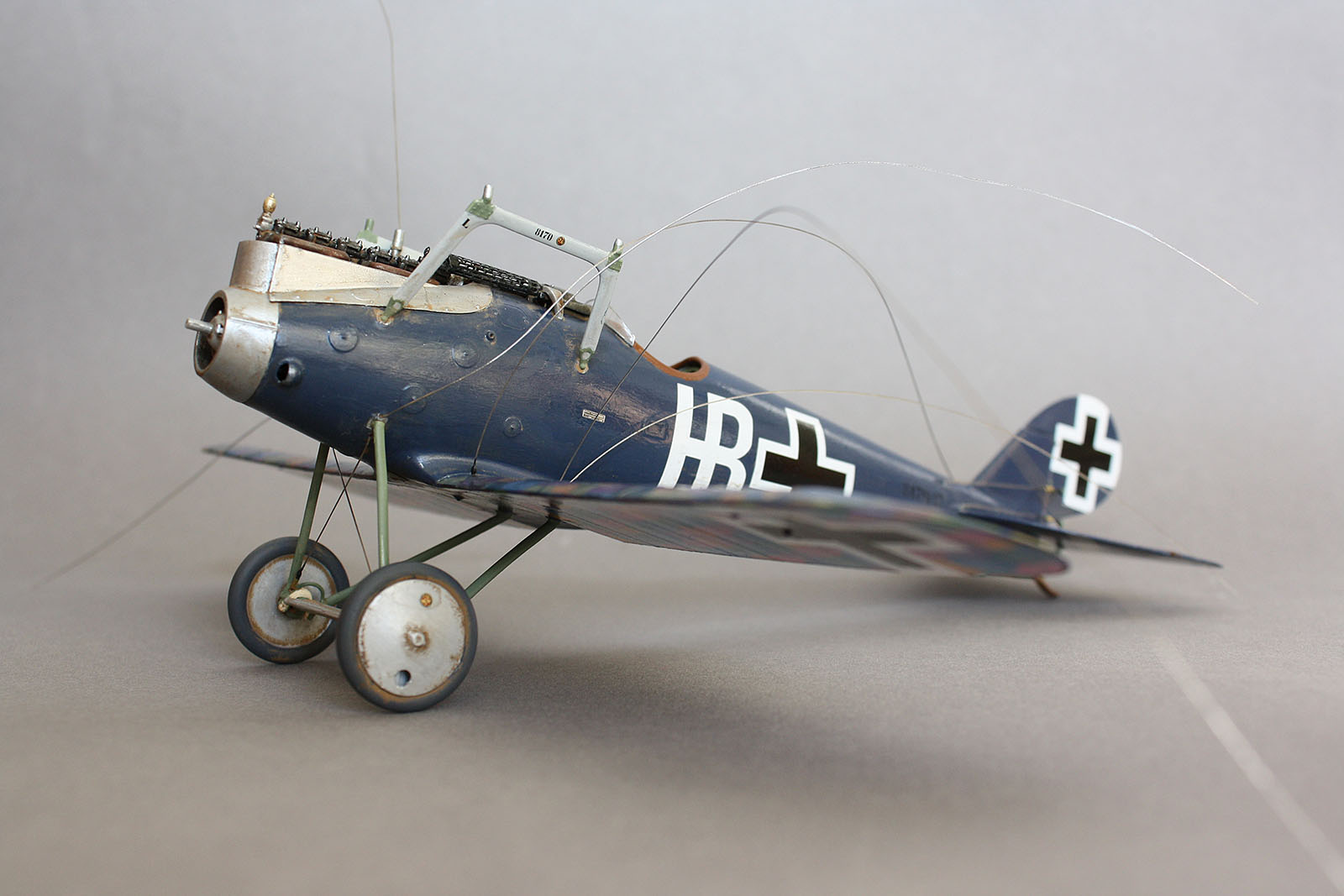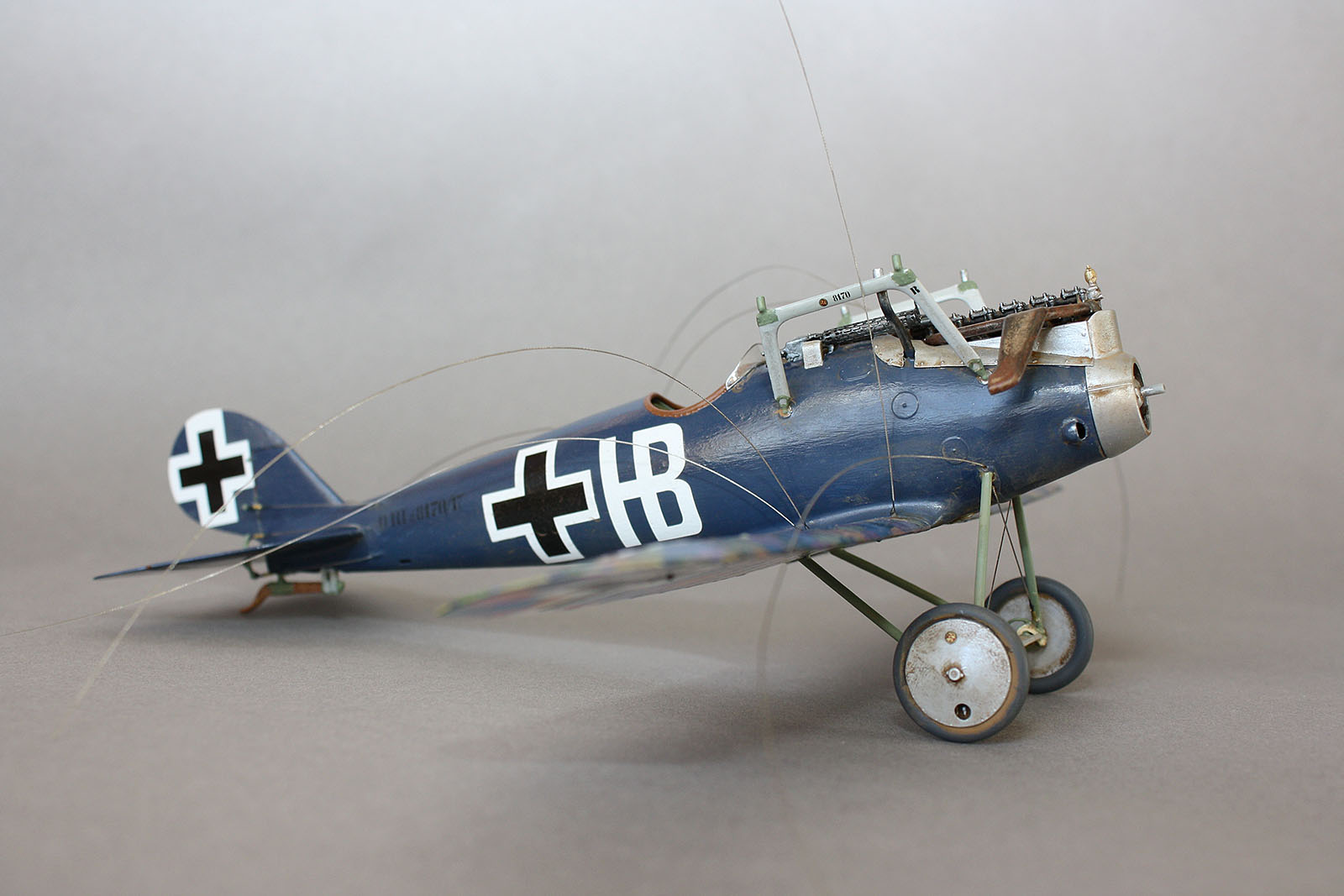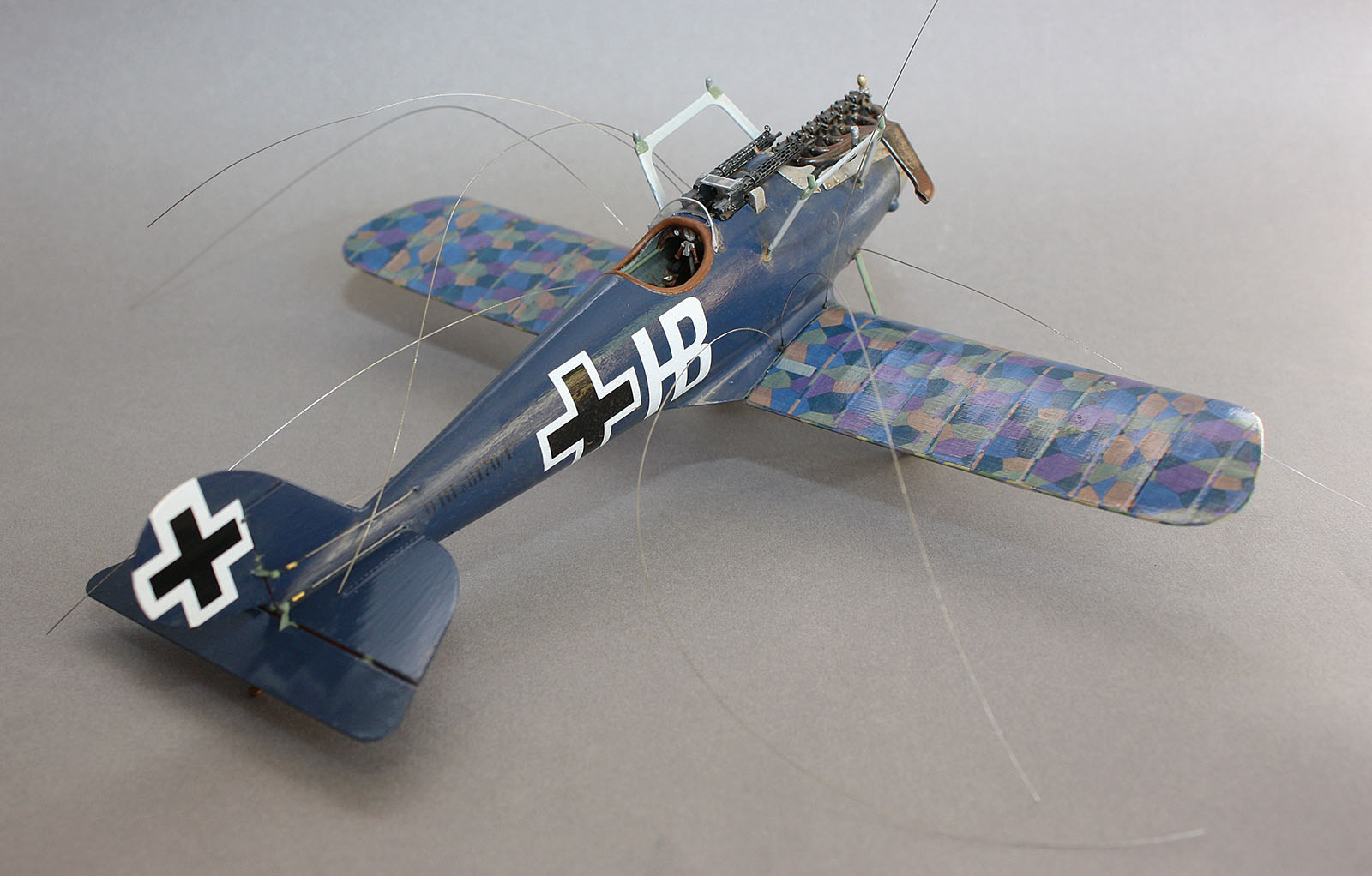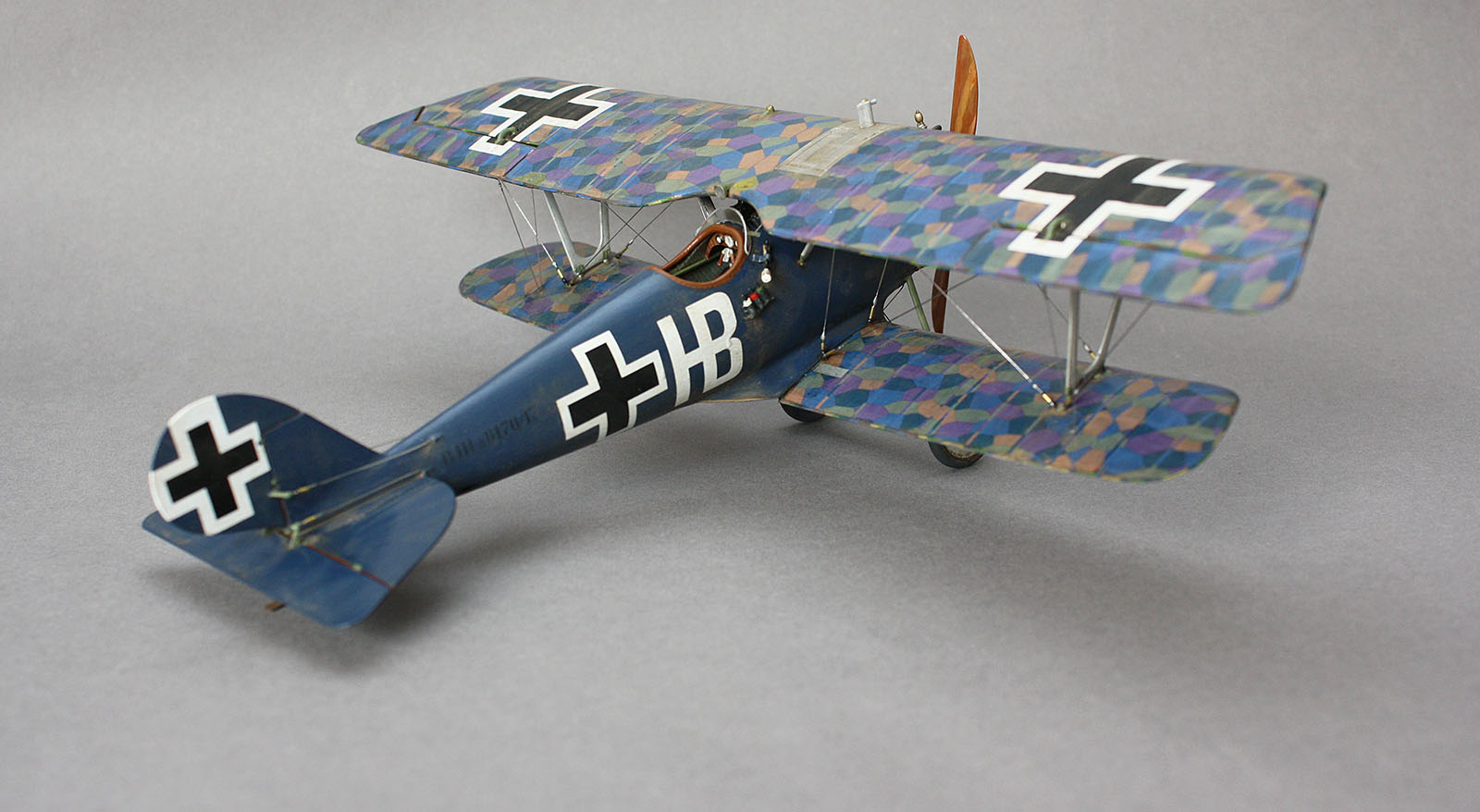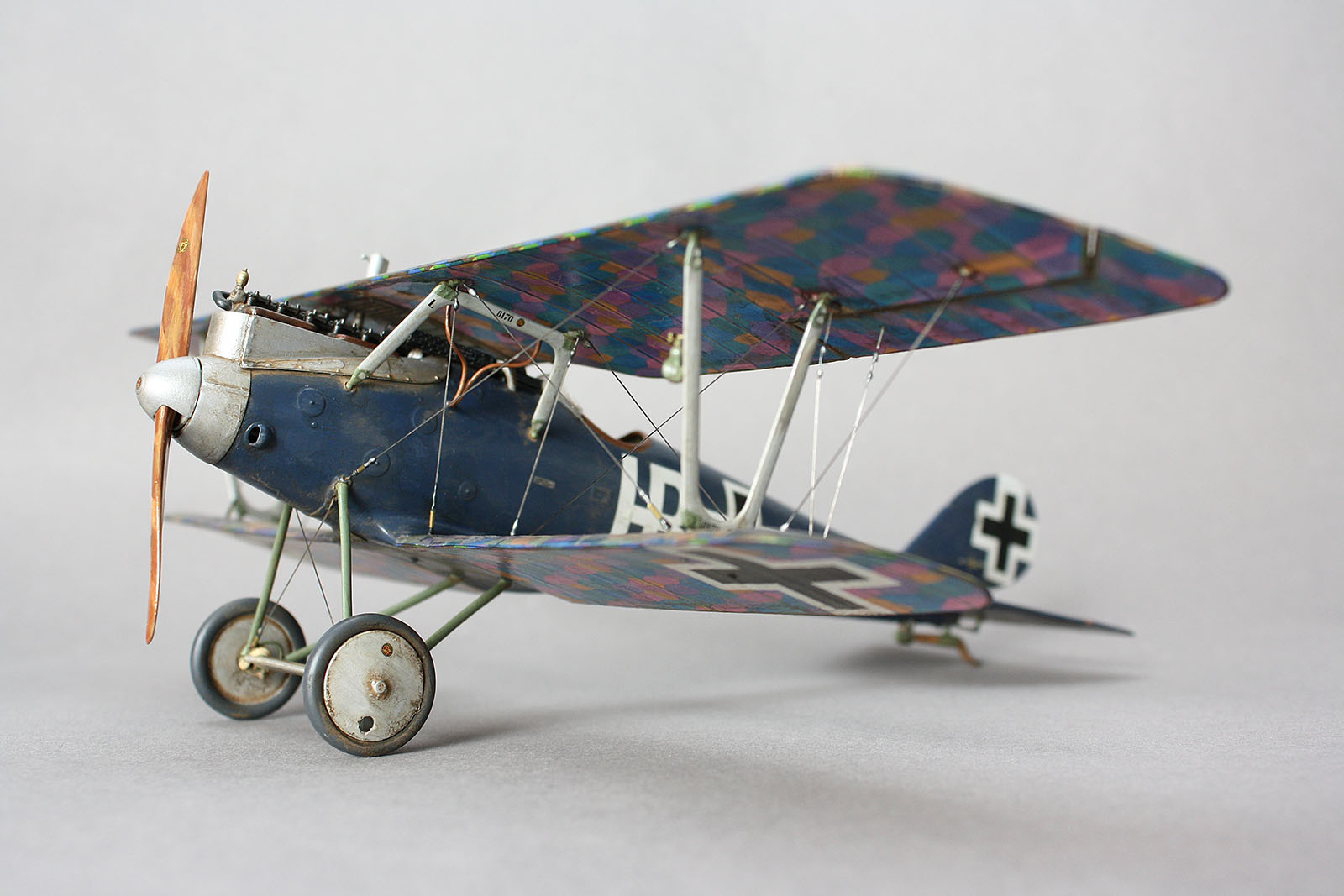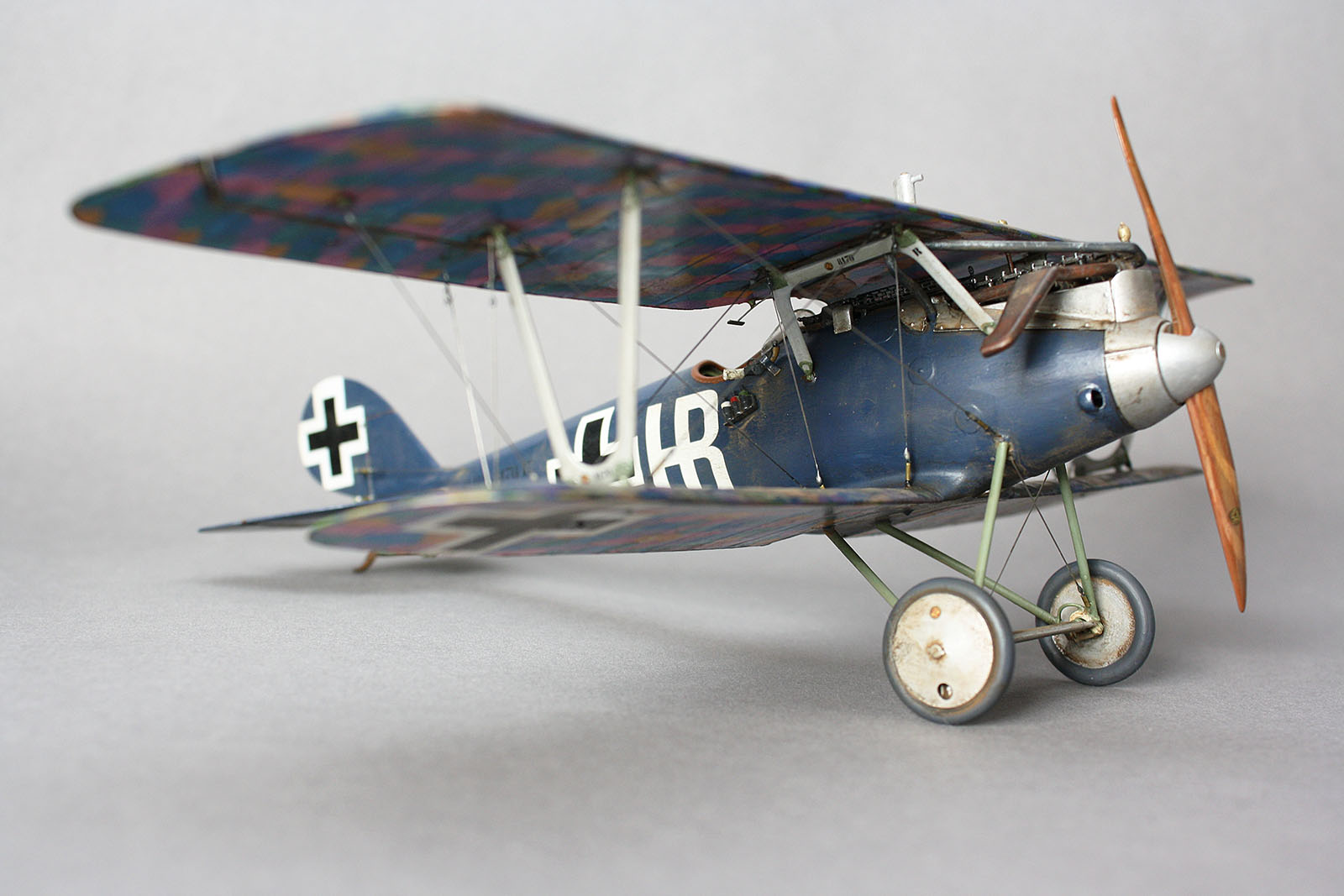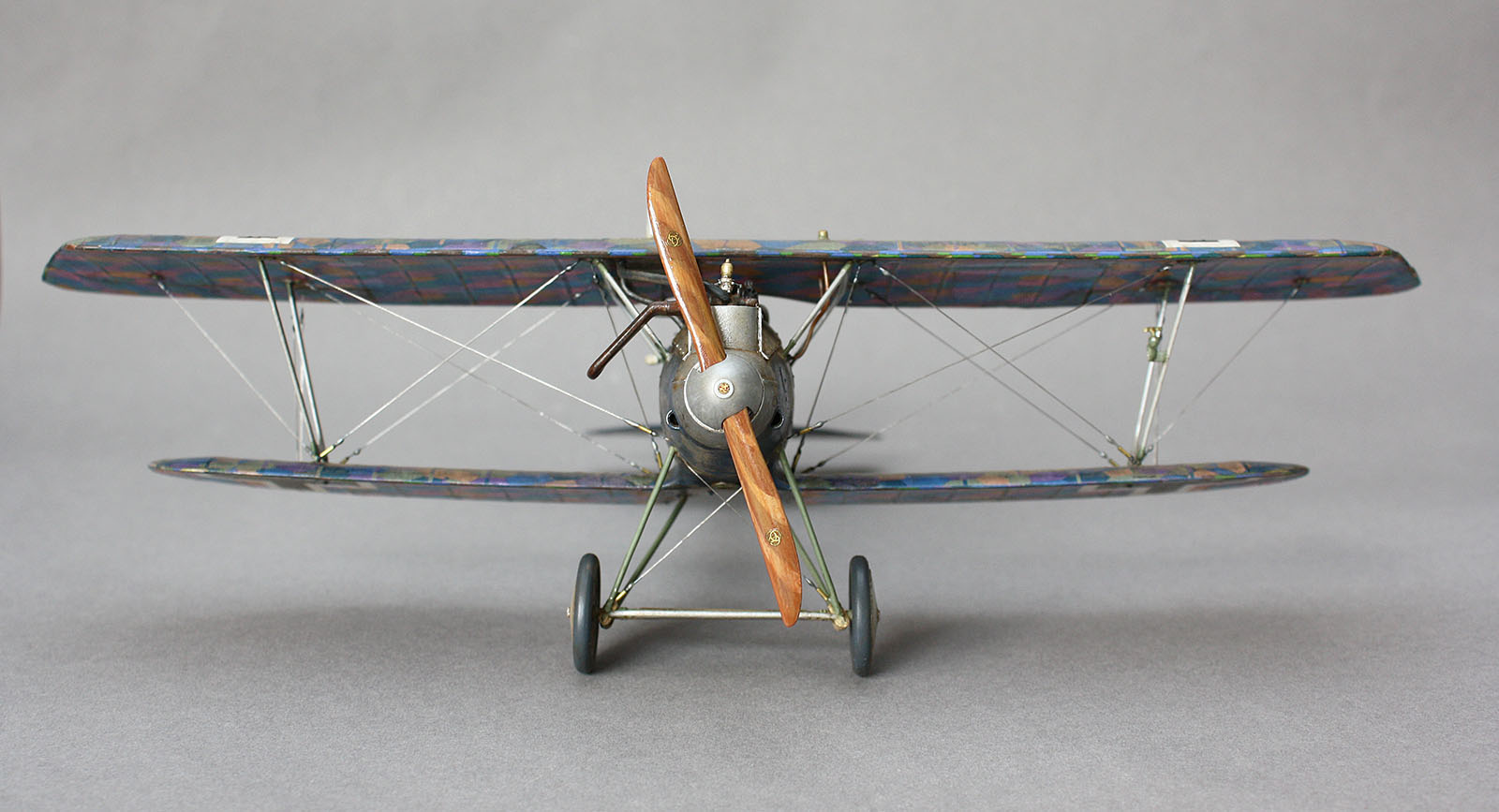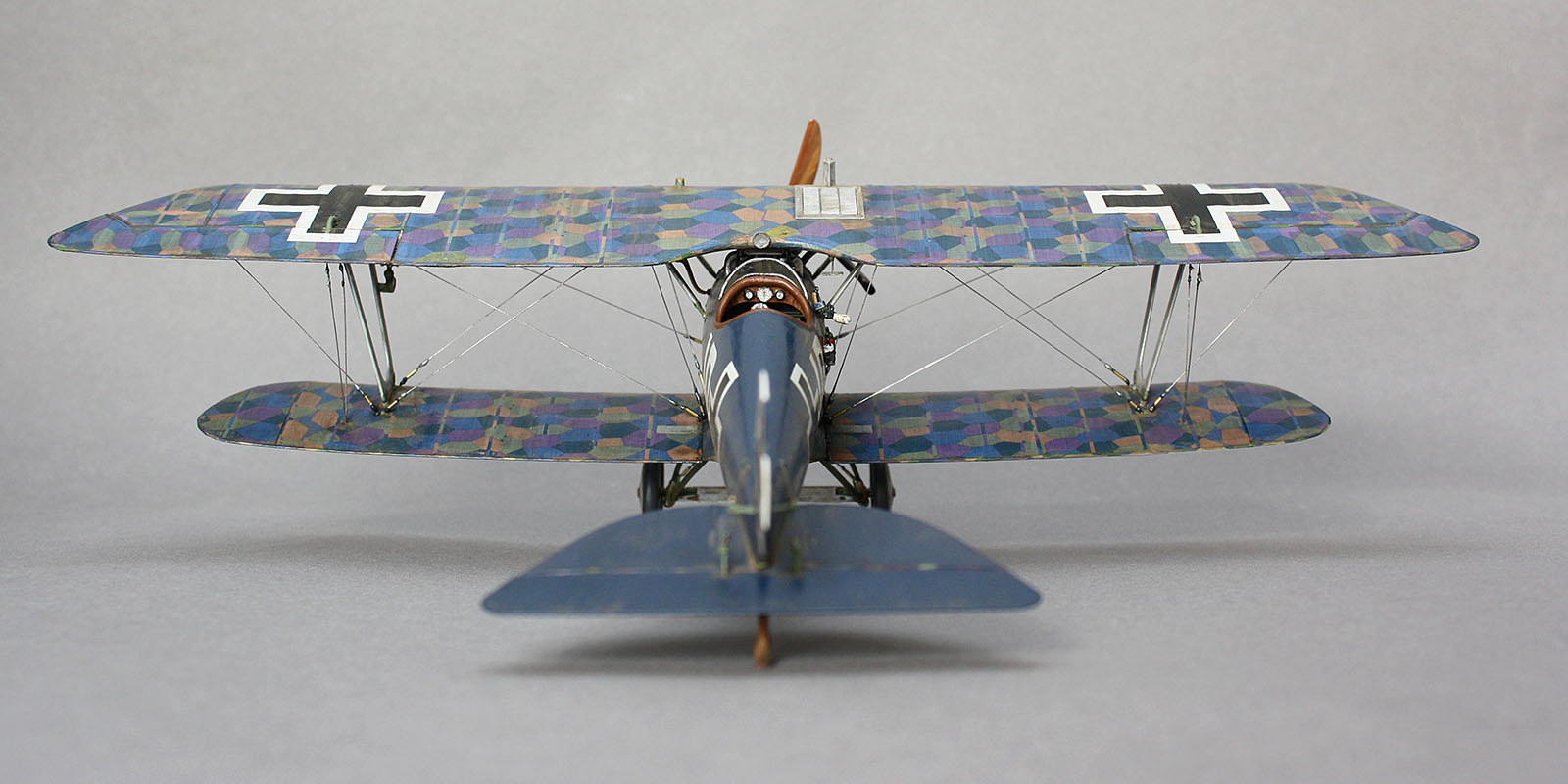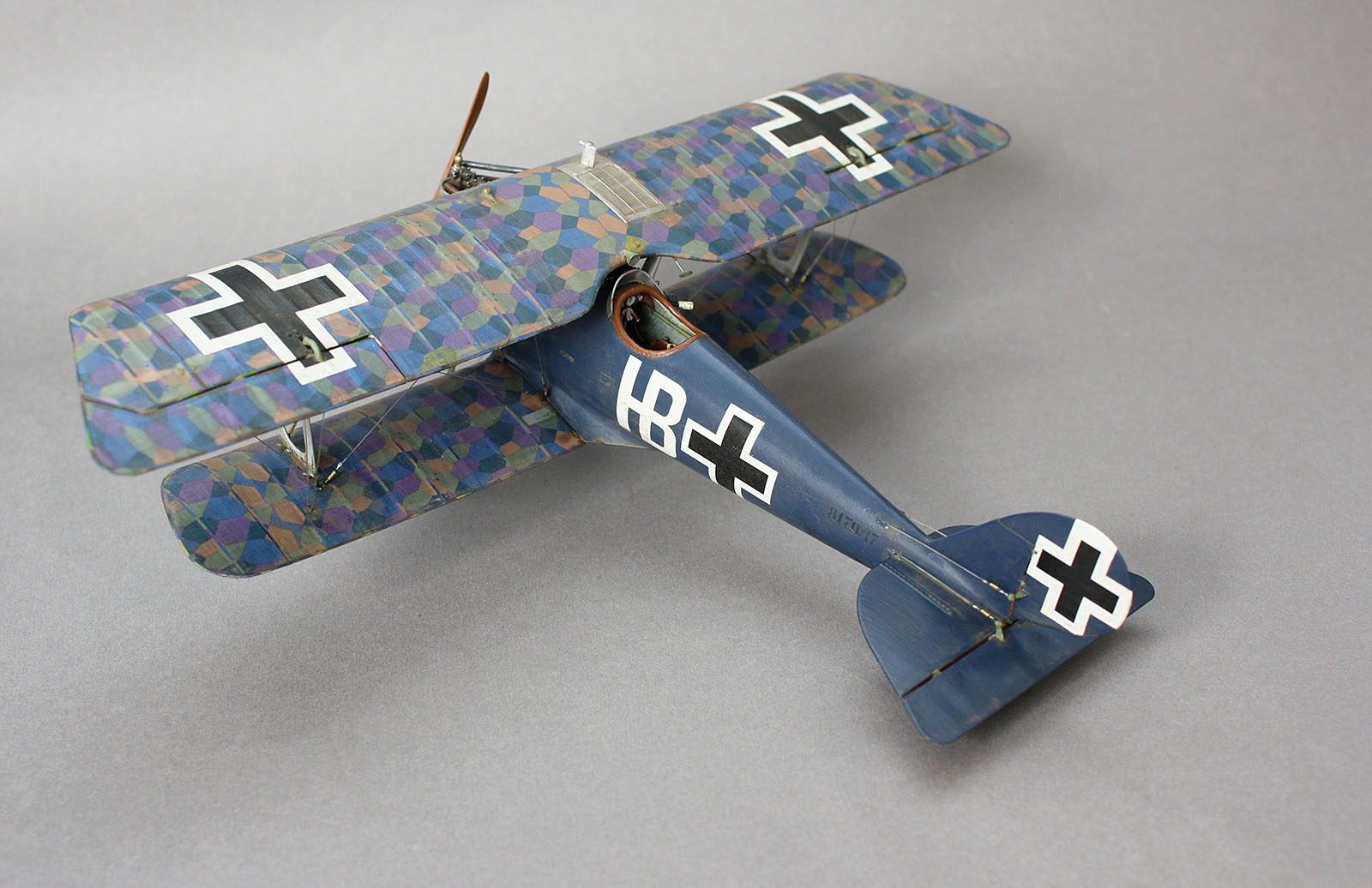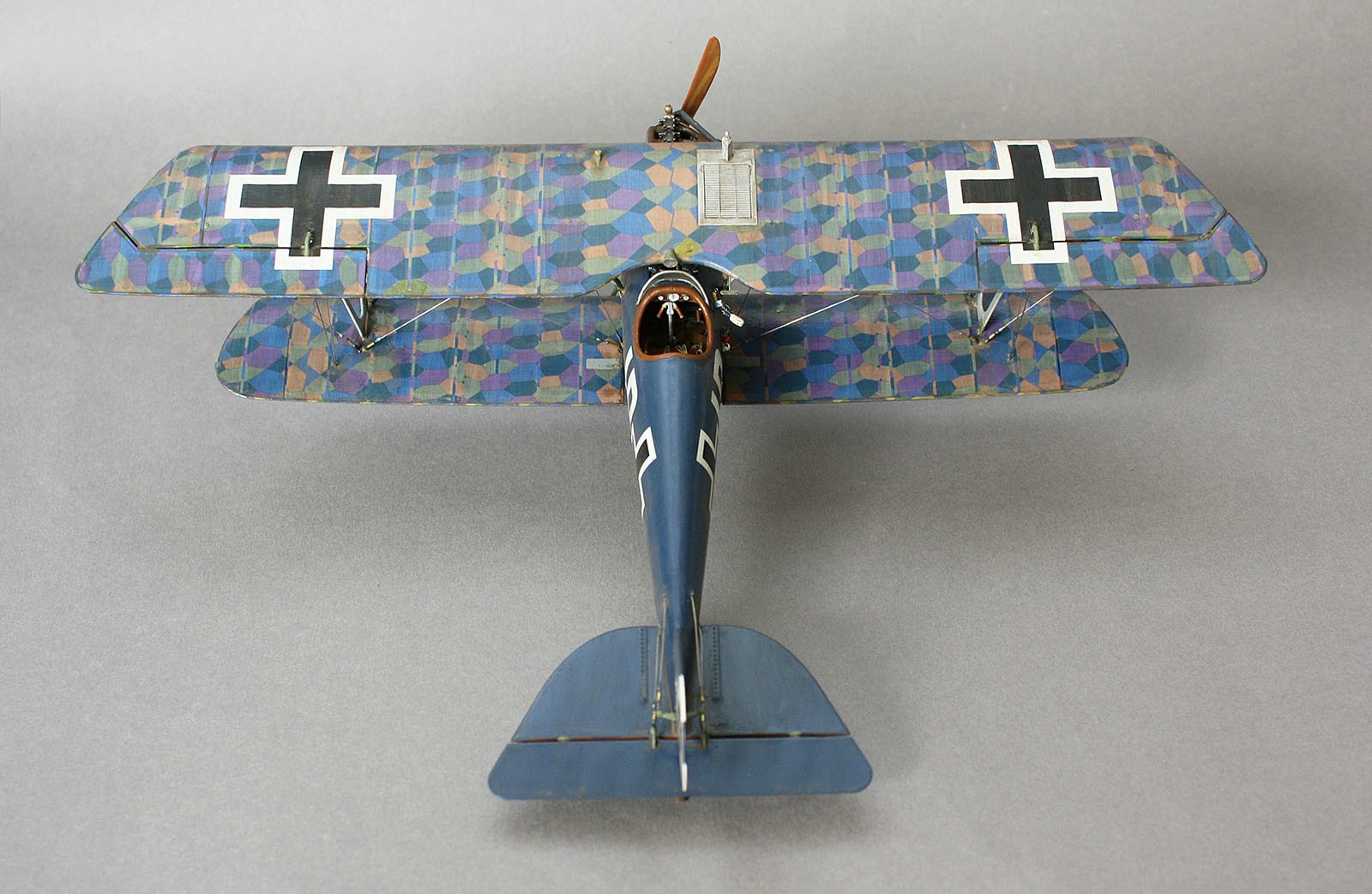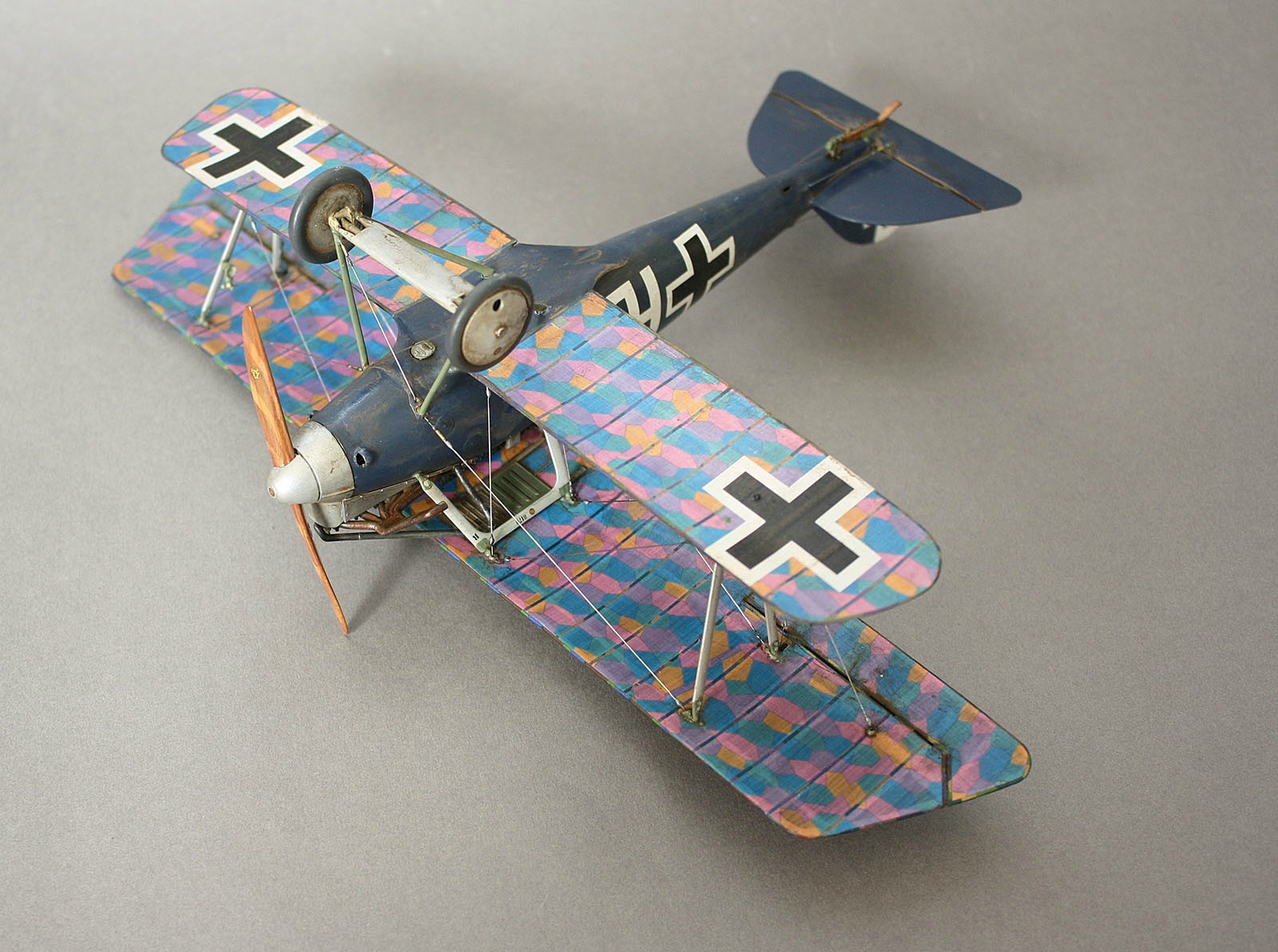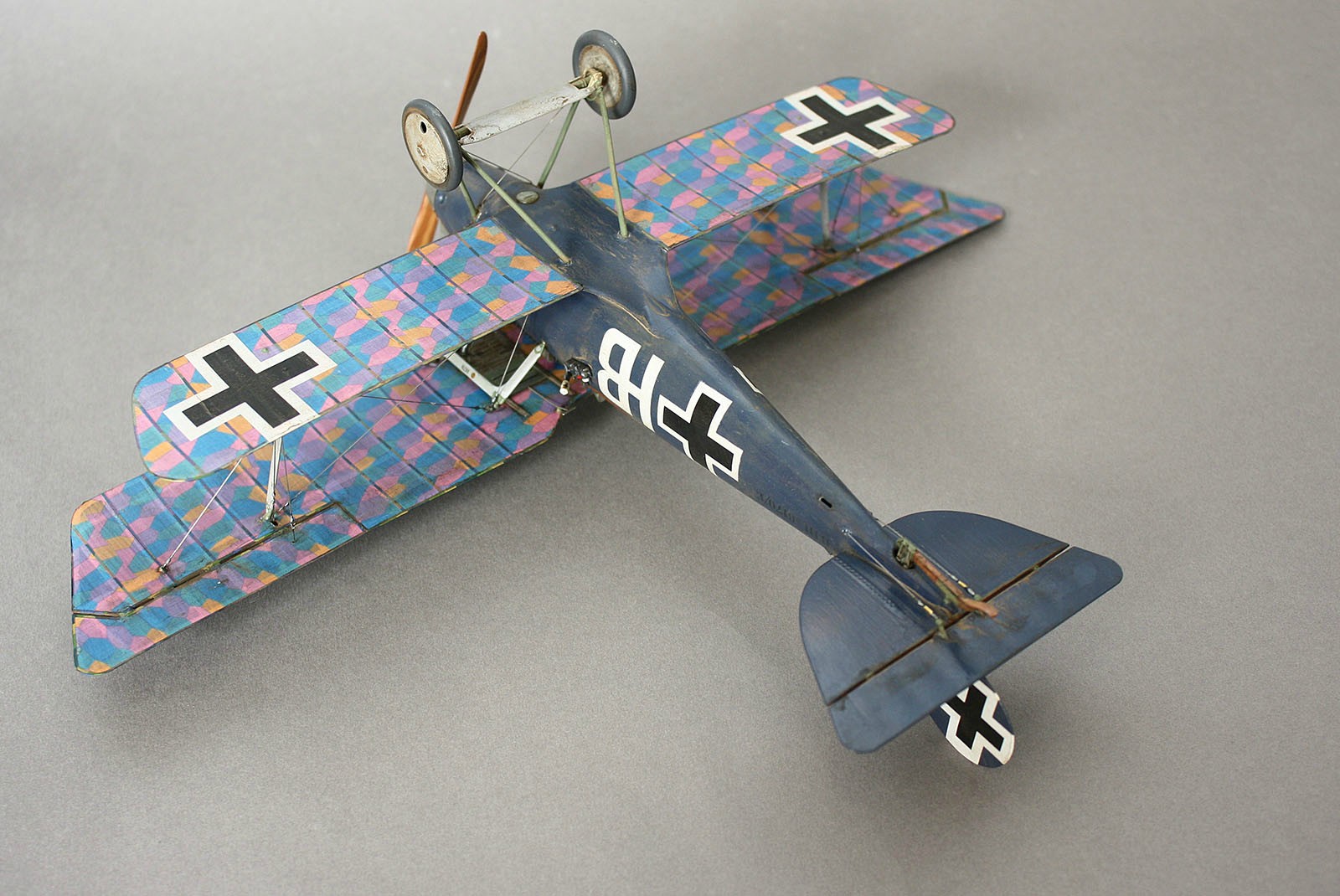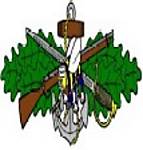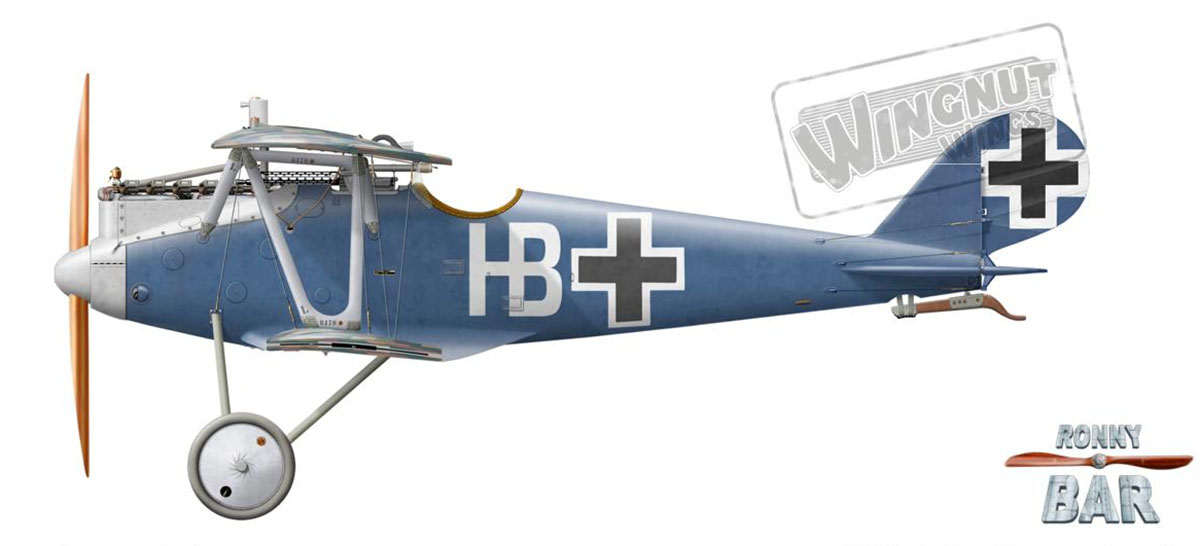
Hans Bohning's rather colorful late war Pfalz D.IIIa, built from Wingnut Wings kit 32006 (that needs no introduction) and Flying Circus Part 2 Decal set 30020.
Small departure from my usual Out of the box "shake and bake" is addition of Aviattic Lozenge set *, which I hope will add to the look of the finished model... HB profile is interesting in regards to both wings being left as lozenge camouflage fabric instead of being partially or fully overpainted... It would be even more striking to have a profile for Pfalz with its tail surfaces left lozenge as well, but I came up short in my scant searches. The profile also offers unique configuration of flare gun / flares mounted on the outside of the fuselage - that should tickle the scratch detailing bone just enough.
The WnW Pfalz D.IIIa kit comes with single sheet of lozenge decals that combine lower, upper and 2 types of ribtapes on one sheet. All kit profiles have at least top of the upper wing overpainted, so there is less top surface fabric decal than there is lower. Without measuring, I assume that there is not enough kit lozenge for HB profile and I'm in luck for having the alternative.
* It's worth noting that I'm getting this decal set as trial / review sample, so my opinion may be skewed in favor of the experience of using it... I am, however, a very thrifty modeler (especially when it comes to one stop premium kits like WnW), so the real testament will be whether you'll see the product used more often in the builds after.
Let the build begin!

















